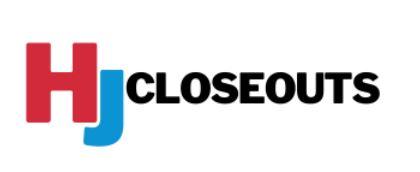Excess inventory, also known as overstock or surplus inventory, refers to the situation where a company holds more goods or products than it needs to meet current customer demand. This excess inventory can result from various factors, including inaccurate demand forecasting, overproduction, changes in customer preferences, economic downturns, or poor inventory management practices.
Having an excess inventory can lead to several challenges and negative effects for a business:
Holding Costs: Keeping excess inventory incurs additional costs for warehousing, storage, insurance, and potential obsolescence.
Capital Tie-Up: Excess inventory ties up valuable capital that could be invested elsewhere in the business.
Reduced Cash Flow: With capital tied up in excess inventory, there might be less cash available for other critical business operations.
Obsolescence: Products that remain in inventory for extended periods may become outdated, reducing their value and potentially leading to losses.
Increased Risk of Loss: There's a higher risk of theft, damage, or deterioration when holding excess inventory.
Opportunity Cost: The opportunity cost of not having the right products in stock can lead to lost sales and dissatisfied customers.
To address excess inventory, companies often implement strategies such as discounting, bundling, or promotions to stimulate demand. Additionally, businesses may revise their inventory management practices, improve demand forecasting, or work more closely with suppliers to prevent overstock situations in the future.
Proper inventory management is crucial for businesses to strike a balance between having enough stock to meet demand and minimizing excess inventory costs.
We buy excess inventory from other businesses
When a business has too much inventory, it is facing the issue of excess inventory, also known as overstock or surplus inventory. As mentioned earlier, this occurs when the quantity of goods or products in the company's possession exceeds the actual demand or sales requirements.
Having too much inventory can be problematic for several reasons:
Costs: Excess inventory ties up working capital and leads to increased holding costs, including storage, insurance, and potential obsolescence expenses.
Reduced Cash Flow: With a significant portion of capital tied up in excess inventory, the business may face cash flow challenges and have less money available for essential operations and investments.
Risk of Obsolescence: Products sitting in inventory for extended periods are at risk of becoming outdated or obsolete, reducing their value and potentially leading to losses.
Storage Space: Excess inventory may require additional warehouse space or storage facilities, which can be costly and inefficient.
Opportunity Cost: The capital invested in excess inventory could have been used for other purposes, such as research and development, marketing, or expansion.
Increased Management Complexity: Managing excess inventory can be time-consuming and divert attention from other critical aspects of the business.
To address the issue of too much inventory, businesses can implement several strategies:
Discounts and Promotions: Offer discounts or run promotions to incentivize customers to purchase excess inventory.
Liquidation: Sell excess inventory to liquidators or through online marketplaces at discounted prices.
Adjusting Production or Procurement: Review and adjust production or procurement quantities based on actual demand and sales data.

Improved Forecasting and Inventory Management: Implement better forecasting techniques and inventory management systems to ensure optimal inventory levels.
Returning to Suppliers: Negotiate with suppliers to return excess inventory or explore buyback arrangements.
Donations: Donate excess inventory to charitable organizations for potential tax benefits.
By effectively managing and reducing excess inventory, businesses can optimize their operations, free up capital, and improve their overall financial health. It's crucial to strike the right balance between having enough inventory to meet customer demand and avoiding the costs and risks associated with excess stock.
Buying school supplies at wholesale prices can offer numerous benefits, both for individuals and businesses. Here are some of the advantages of purchasing school supplies at wholesale:
Cost savings: One of the most significant benefits of buying school supplies wholesale is the cost savings. Wholesale prices are generally lower than retail prices, allowing you to buy in bulk at a reduced rate. This is particularly advantageous for schools, businesses, or parents with multiple children, as it can lead to substantial cost reductions.
Bulk purchasing: Wholesale buying allows you to purchase school supplies in large quantities, ensuring you have an ample supply to meet the needs of students or employees throughout the year. Great way to prepare gifts for the kids in need.
Discounts and promotions: We offer special discounts and promotions to customers who buy in bulk. These deals can lead to even greater savings, making it a cost-effective option for schools and businesses.
Convenience and time-saving: By buying school supplies wholesale, you can streamline the purchasing process. Instead of shopping for individual items, you can order everything you need in one go, saving time and effort.
Availability of a wide range of products: Wholesalers typically offer a wide variety of school supplies, from stationery to arts and crafts materials. This means you can find everything you need in one place, making the shopping experience more convenient.
Reselling opportunities: If you're a business or organization buying school supplies wholesale, you may have the option to resell the excess items, generating additional revenue.
Customization options: Some wholesalers offer customization options, such as printing your school or business logo on certain supplies. This can help promote your brand and create a sense of unity among students or employees.
Quality assurance: Reputable wholesalers often provide high-quality products, which can be crucial for school supplies that need to withstand daily use.
Environmental impact: Buying school supplies wholesale in larger quantities may reduce packaging waste compared to buying individual items.



